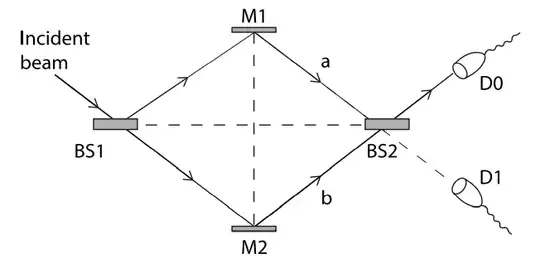Even if the double slit experiment gives interesting (weird) results, it only concludes that each photon interacts with itself after passing the two slits. I have been thinking about a different experimental setup, where you have two well defined light sources (with specific wave lengths and phase) but no slits. And now to my questions: Has anyone ever done such an experiment, and will there be an interference pattern on the wall?
If the answer to the second question is "no", light can not be a true wave - it only has some wavelike properties. But if it is "yes", things become much more interesting.
If there is an interference pattern on the wall, there has to be an interference pattern even if both light sources are emitting single photons at random, but as seldom as, say, once per minute. That in turn would mean that the photons know about each other, even if they are separated in time with several seconds, and the light sources are independent (not entangled).
